All that trouble just to get at a berry.
1/8000, f/5.6, ISO 800, Canon 7D Mark II, Canon EF 500mm f/4L IS II USM + EF 1.4 III Extender, not baited, set up or called in
Three days ago while I was photographing kinglets and sparrows in extreme northern Utah this Townsend’s Solitaire unexpectedly showed up looking for a meal. First “he” surveyed the area for potential threats but I must have looked harmless enough because he fairly quickly ignored me and went after some of the nearby berries.
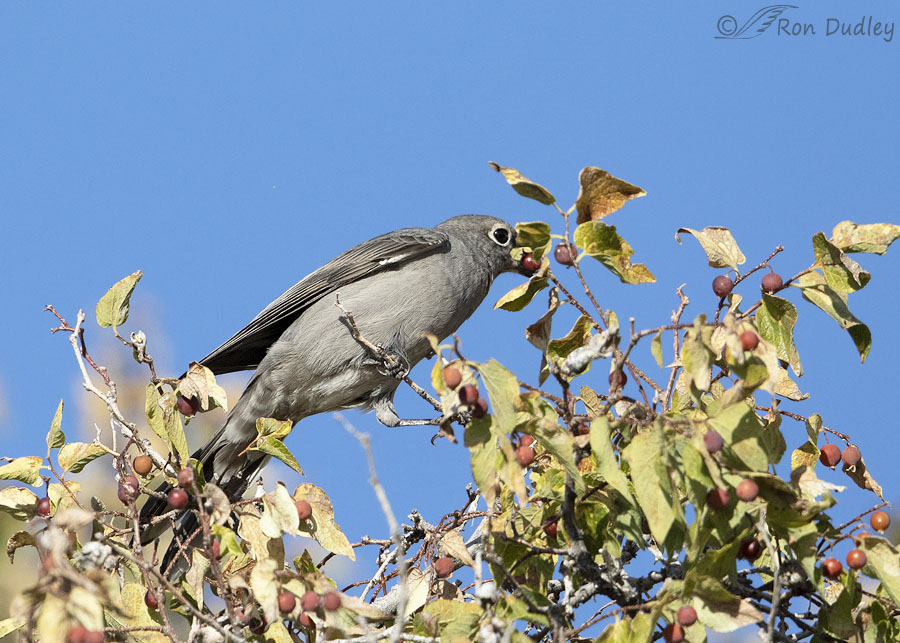
1/5000, f/6.3, ISO 800, Canon 7D Mark II, Canon EF 500mm f/4L IS II USM + EF 1.4 III Extender, not baited, set up or called in
I’m not sure what kind of berries they were but they must have had very tough stems because he sure had a devil of a time pulling them off the tree – significantly more trouble than I’ve seen in the past with other birds and different berries. He eventually got the one he’s about to grasp in his bill off the tree but it took some serious tugging to get it done.
Notice the second berry directly in front of the one in his bill. That was the one he tried to get next but from this perch he couldn’t get the leverage he needed to pull it off the tree so…
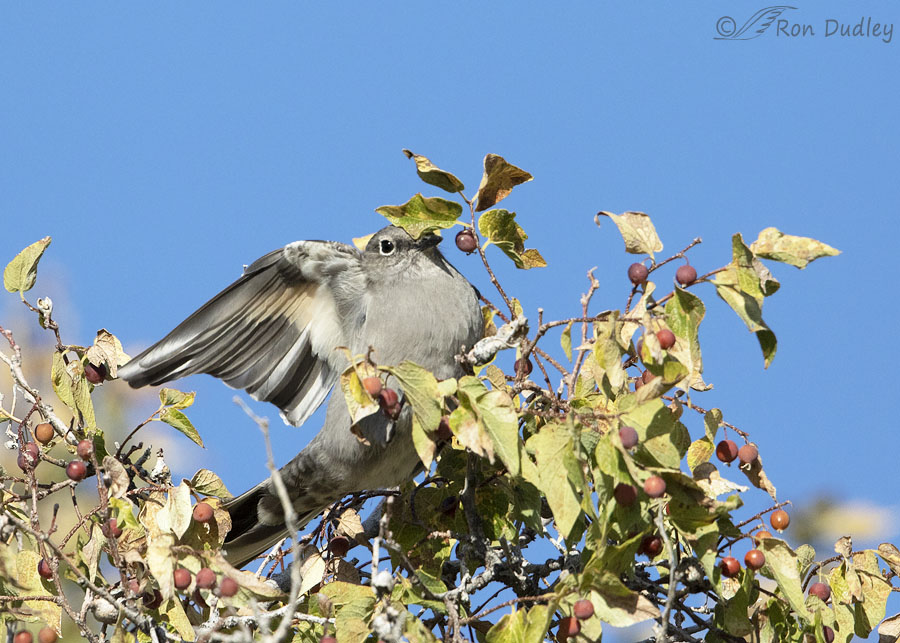
1/5000, f/6.3, ISO 800, Canon 7D Mark II, Canon EF 500mm f/4L IS II USM + EF 1.4 III Extender, not baited, set up or called in
he moved to a slightly different spot to see if that worked. Notice that the berry is still there directly in front of his bill.
But during the process of moving he struggled to regain his balance.
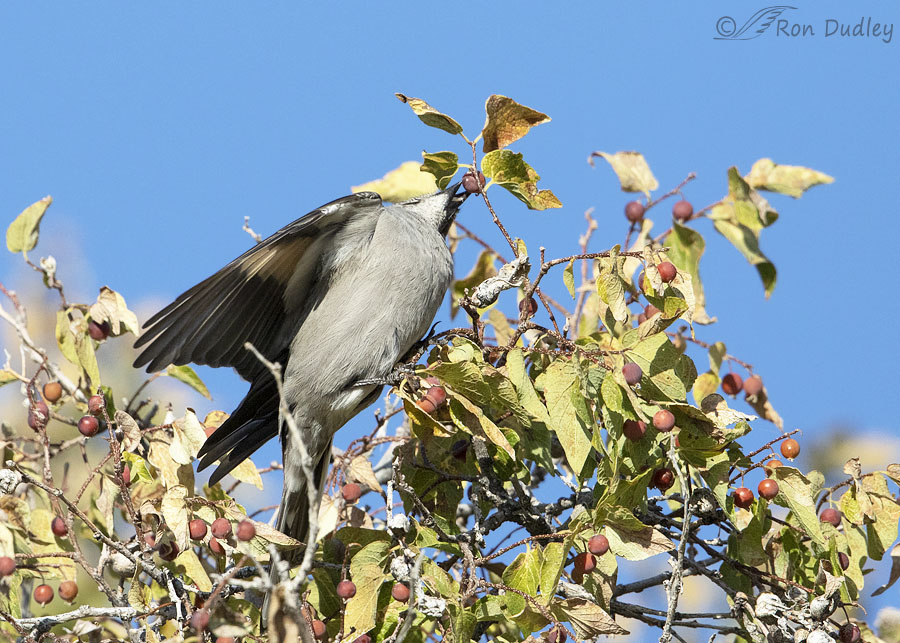
1/5000, f/6.3, ISO 800, Canon 7D Mark II, Canon EF 500mm f/4L IS II USM + EF 1.4 III Extender, not baited, set up or called in
When he eventually found a stable perch again he still couldn’t get a firm enough grasp on the berry to pull it off the tree so he gave up on that berry and…
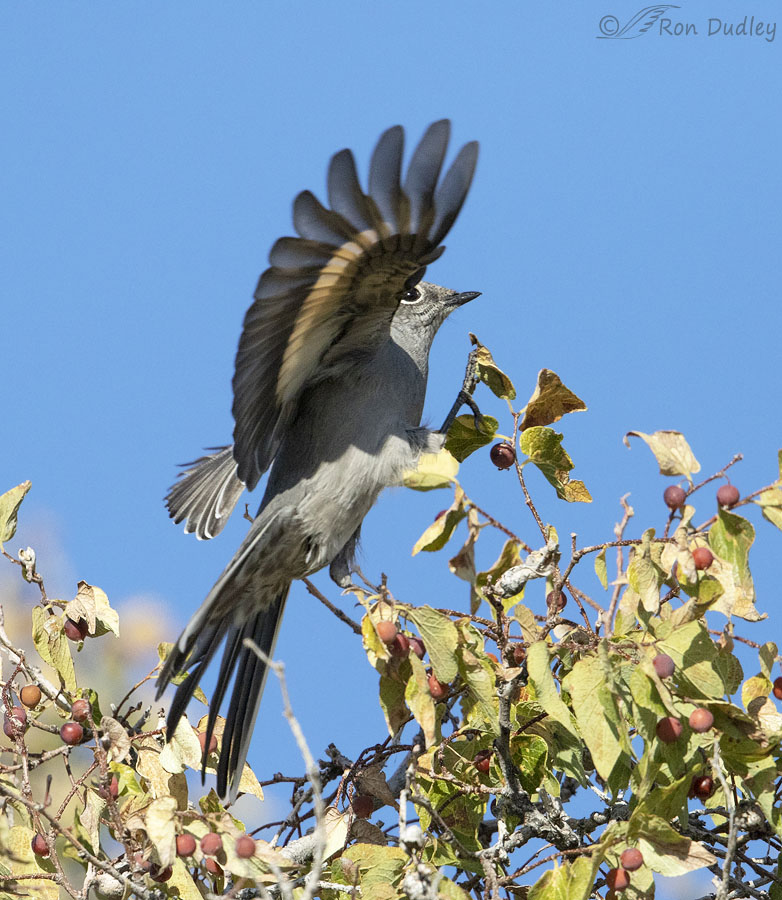
1/6400, f/6.3, ISO 800, Canon 7D Mark II, Canon EF 500mm f/4L IS II USM + EF 1.4 III Extender, not baited, set up or called in
moved to a higher spot using the same twig that the coveted berry was attached to…
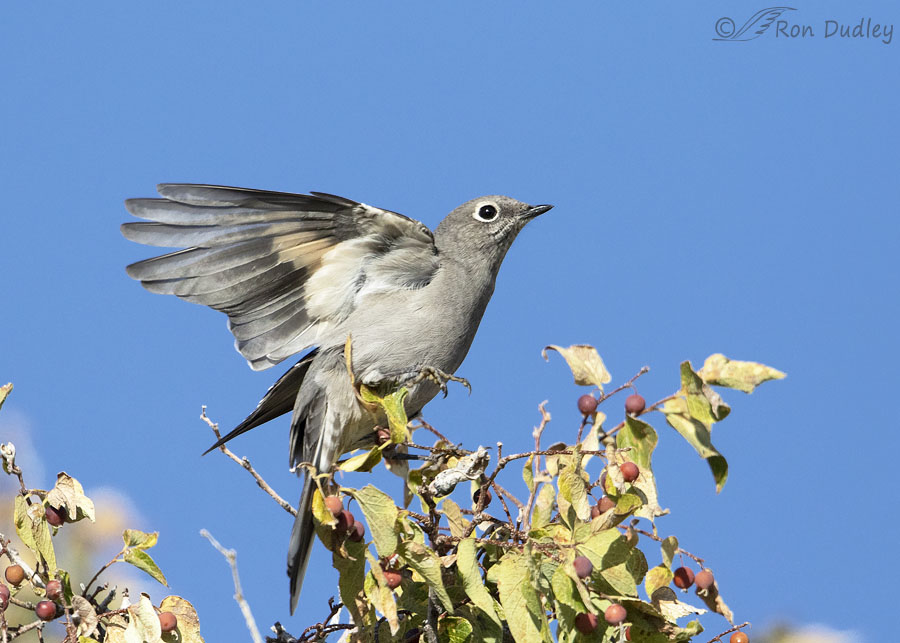
1/5000, f/6.3, ISO 800, Canon 7D Mark II, Canon EF 500mm f/4L IS II USM + EF 1.4 III Extender, not baited, set up or called in
as his new perch. From here he used his new vantage point to look around for another source of berries (here he’s still trying to become stable on his new perch). If you look carefully you’ll see that the berry he was after is still there beneath his lower belly.
At this point I thought he’d just pluck some of the berries directly in front of him but instead he looked around and eventually…
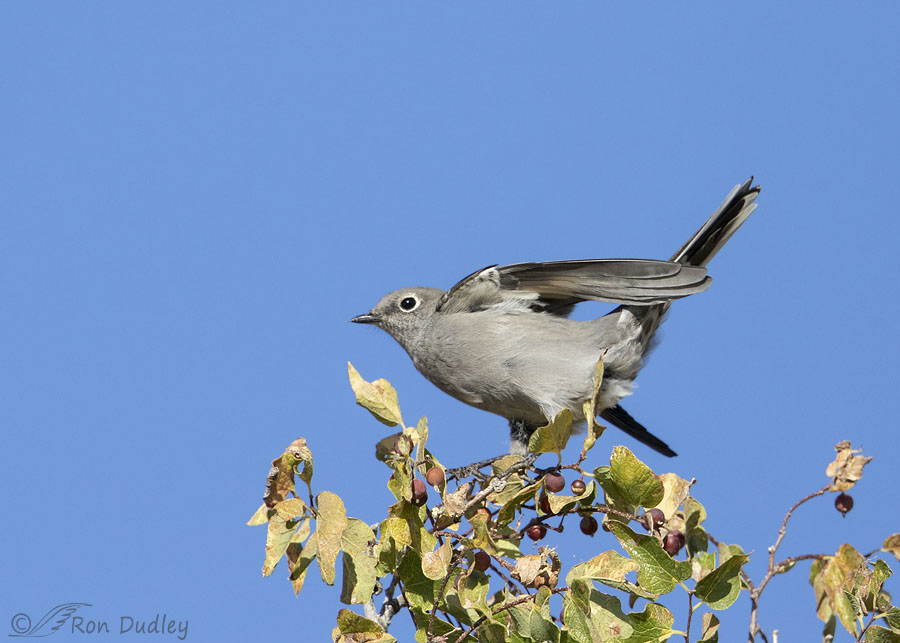
1/4000, f/6.3, ISO 800, Canon 7D Mark II, Canon EF 500mm f/4L IS II USM + EF 1.4 III Extender, not baited, set up or called in
flew to a different treetop perch and began harvesting berries there. In this photo he has just landed.
In the end it’s no big deal I guess, just another small frustration in the daily life of a bird. But it amuses me to document these kinds of seemingly meaningless behaviors, though they’re obviously serious business for birds.
Ron
PS – One of my Facebook followers provided an ID on the berries. They’re hackberries.


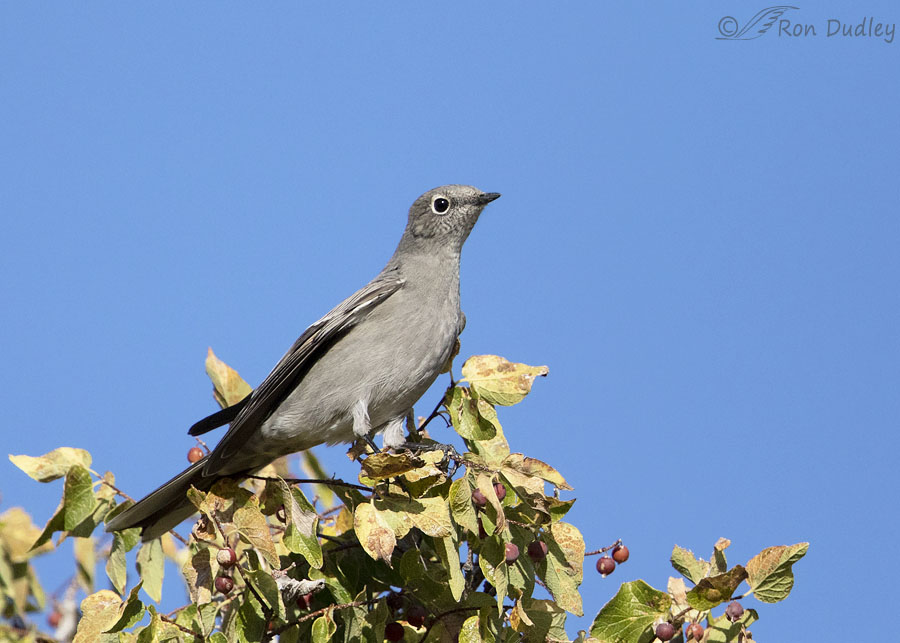
It is amazing how much energy they expend to gain more fuel.
Super series Ron!
Charlotte
Wonderful shots, Ron! Such a good-looking bird too. You did a great job getting those beautiful patterns on the underside of the wings. Shot 5 makes me think of a Flamenco dancer.
That would be sHot, not sNot. Geez!
Already fixed it, Marty! If you hadn’t said anything no one would have known…
The puppies have upper respiratory infections, so I have “snot on the brain.” (They’re responding to their meds, so that’s a plus!)
(They’re responding to their meds, so that’s a plus!)
Love these behavioral pics of the bird on the berry bush. I have never seen a Townsend’s Solitaire. I really gotta get out West and see more birds. Great photos – thanks!
Thanks, Joanne. I hope you make it out here some day.
A bird’s gotta do what a bird’s gotta do: obviously, the angle of attack for these berries requires the utmost precision
I tried to eat a juniper berry once; definitely for the birds (at least this bird).
Juniper berries are for drinking rather than eating…
With a little tonic and lime!
I tasted one too, Lyle. Never again.
I suspect if we had to work as hard for our meals obesity would be a mythical beast. Hackberries must be tasty or the food in the area scarce for the Townsend to put in that effort – rewarding as it was for you and us.
There aren’t many other types of berries left, EC. And apparently the solitaire’s haven’t yet moved to lower elevations for their winter staple food – juniper berries.
If I can’t have THIS berry, I’ll take my business elsewhere. Good day to you Twig. I say GOOD DAY!
NICE! It is always interesting why they select a certain berry – of course, so do we! Love the wing flare and lighting on it – shows more color than the general subtle color of the bird. Still light, fine snow here, 23 and a N breeze. Hard to say how much we have since a lot melted and the blow but guessing 4 – 5″. Looks like this morning from the road reports it isn’t as bad up N as yesterday for awhile – haven’t really heard anything…..
It is always interesting why they select a certain berry – of course, so do we! Love the wing flare and lighting on it – shows more color than the general subtle color of the bird. Still light, fine snow here, 23 and a N breeze. Hard to say how much we have since a lot melted and the blow but guessing 4 – 5″. Looks like this morning from the road reports it isn’t as bad up N as yesterday for awhile – haven’t really heard anything…..
Thanks, Judy. I haven’t heard much yet from up north but it looks pretty cold and white from the little I’ve seen.
“Document these kinds of seemingly meaningless behaviors.” And document you did, and of course not meaningless to them. Really nice series Ron. I have found that some of the best bird photos can be had while they are in pursuit of berries and other edibles. When they are involved like this they will often not leave just because you are near. I have only seen and been able to get photos once here near our Granite Mountain. Although almost all grey except for the spread wings I think they are very handsome birds. Like the white circle around the very black eyes.
Thanks, Everett. I agree, that white eye ring really stands out.
WOW, a Townsend’s! Great shots, I have only seen this species twice in my life. What fun to have this photographic opportunity with this species. Of course these guys live in your area, so my first WOW is probably sort of hilarious to anyone living in Utah.
Dick, there’s a lot of Townsend’s Solitaires around here if you know where to look. During winter they typically inhabit juniper forests where they harvest juniper berries almost exclusively.
The problem with photographing them is that they spend most of their time in the treetops where they’re difficult to photograph so I don’t have many photos of them I like very much.